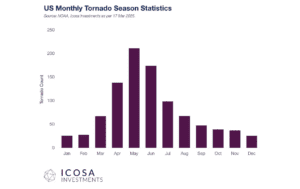Coverage choices: the good, the bad and the broker

Coverage choices: the good, the bad and the broker | Insurance Business Australia
Insurance News
Coverage choices: the good, the bad and the broker
“Sometimes choice is both good and bad”
Insurance News
By
Daniel Wood
Market reports show that the global insurance situation is more stable than it was a year ago. For some insurance lines, pricing has softened and capacity has increased. Insurers are offering more coverages across cyber and financial lines, including directors and officers (D&O). However, increasing coverage choices means more work for brokers. Some regard this as their biggest current challenge.
“As inflation stabilises, more predictable claims cycles and improved returns on interest-rate-sensitive investments are expected to enhance profitability,” said EY’s 2024 Global Insurance Outlook.
This positive situation for insurers means that brokers, sometimes for the first time since the onset of the COVID-19 pandemic, may have numerous coverage options available for customers where, recently, there were only a few.
“Sometimes choice is both good and bad,” said insurance broker Joe Hershewe. “It creates competition but every alternative choice is not necessarily created equal.”
Hershewe is head of claims for Bellrock, a Sydney-headquartered firm offering risk advice and insurance brokering services. He said this higher number of coverage choices is currently his biggest insurance challenge because it creates a lot of work and really tests risk advisory skills.
Which insurance lines have more options now?
Insurance Business asked him where he’s seeing more choices for coverages?
“It feels like we could be entering this cycle where there’s an easing or a softening in various classes just based on new insurance players like Everest, Markel and others who have come into areas that they viewed as being hard and potentially fertile ground for profit,” he said.
“D&O is always a great example because of how hard the rates got and other insurers and competitors saw that and wanted to pour in,” said Hershewe.
However, he also included cyber and “any coverages on the liability side” as potentially having more insurance options today than they did just months ago.
Hershewe said this widening of choices can be challenging for brokers.
“From a broker’s perspective it gives more optionality, perhaps, for risk transfers, but there’s probably got to be a healthy sense of scepticism,” he said.
Price vs trust and coverage?
Hershewe suggested that brokers like him are now being faced, more often than before, with the temptation to move their client to a new carrier based “purely on price.”
However, he warned against making unwise coverage switches.
“Or is there really utility in the trust, the rapport and the foundation that you’ve had with a particular insurer for years and years?” Hershewe said.
He said pricing, coverage and claims performance are all important factors to consider together before a broker changes a client’s insurer.
“From a risk advisor’s perspective, a broker has really got to go through a full due diligence on all the other options,” said Hershewe. “Then, when they make a recommendation to a customer, they can really explain the options including offering a tailored recommendation.”
He said this was relatively easy to do when only three or four markets could provide the terms.
“When you have 12, 15 or 20 different options it really tests the skill and the advisory function more than it ever has,” said Hershewe. “I think that can be a very challenging situation.”
He said the most important thing for a broker to focus on is the level of coverage for the price. However, it’s also very important that the insurer has an excellent record of paying claims and paying them swiftly.
Insurance broking 101
Even as the coverage choices widen, Hershewe said some elements of a broker’s customer service remain the same.
“It’s basic, it’s being responsive, being prepared, answering the phone,” he said. “We’re in these insurance markets where people can all look the same which makes it more difficult to sift through to really find the best solution for a customer.”
Hershewe said brokers need to be “really thoughtful about who you’re trusting with the insurance coverage.”
“I think for brokers, that is likely to be the biggest challenge: continuing to provide the best possible solution to customers, noting that there’s so much more optionality,” he said.
Are you an insurance broker? What do you see as your biggest current insurance challenge? Rising costs, slow turnaround times, non-vanilla risks or, in a softening market, the work from more coverage choices? Please tell us below
Related Stories
Keep up with the latest news and events
Join our mailing list, it’s free!






